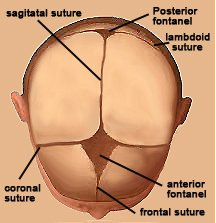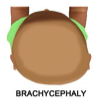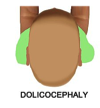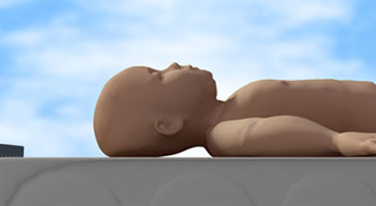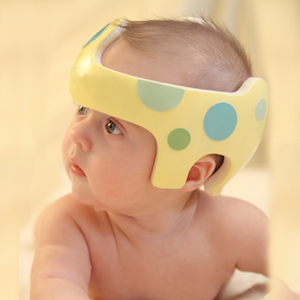WHAT IS FLAT HEAD?
(plagiocephaly)
Positional plagiocephaly is a disorder in which the back or one side of an infant's head is flattened, caused by repeated pressure to one side of the back of the soft infant skull.

HOW IS PLAGIOCEPHALY DIAGNOSED?
Observational Diagnosis
- Most often, the diagnosis does not require X-rays or lab tests. A simple examination by a doctor is generally enough to make the diagnosis of positional plagiocephaly.
- Positional plagiocephaly is generally easy for parents to notice. When looked at from above the baby’s head, one ear may appear more forward than the other. A "parallelogram" skull shape strongly suggests deformational plagiocephaly.
HOW COMMON IS PLAGIOCEPHALY?
Extremely High Incidence
- Over the past several years, pediatricians have seen an increase in the number of children with cranial asymmetry, particularly unilateral flattening of the back of the head (occiput). Currently, deformational plagiocephaly has reached epidemic proportions.
- This increase is likely attributable to parents following the American Academy of Pediatrics "Back-to-Sleep" positioning recommendations aimed at decreasing the risk of SIDS (Sudden Infant Death Syndrome).
HOW IS PLAGIOCEPHALY TREATED?
Custom Helmet or Band
- More severe cases of positional plagiocephaly must be treated with a custom helmet or custom band that would need to be worn for 23 hours a day, for several months.
- If you're starting late, your baby's skull may not become perfectly symmetrical..
Sources




